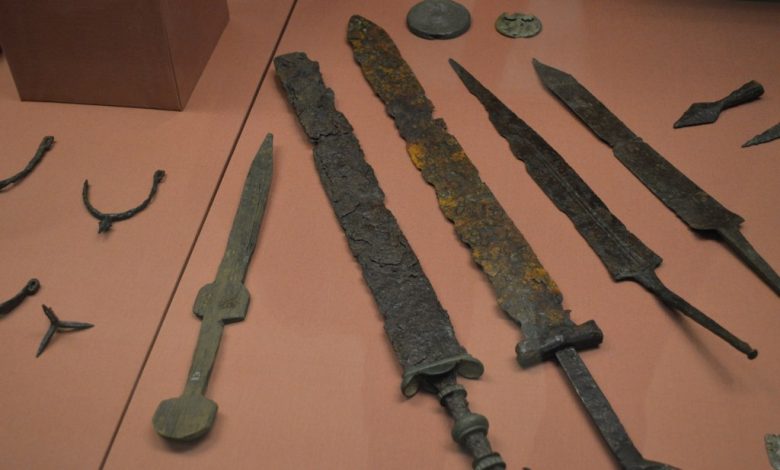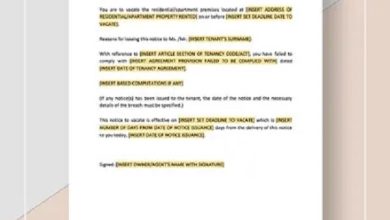Design of Roman Swords: A Comprehensive Guide You Need To Know About Roman Swords

Intro
The Roman Empire, known for its military prowess, is renowned for its vast weaponry. Among the most iconic of these weapons were the Roman swords. These swords were not only essential tools of warfare but also symbols of power and prestige. This article will explore the various types of Roman swords, their historical significance, and their design.
The Evolution of Roman Swords
The earliest swords used by the Romans were similar in design to those used by their neighbors, the Etruscans and the Greeks. These swords were short and single-edged and were used primarily for thrusting. Over time, the Romans developed their unique sword designs better suited to their military tactics.
The Gladius
The most famous of all Roman swords is undoubtedly the Gladius. This short sword, used by the Roman legions from the 3rd century BC until the 3rd century AD, was the weapon of choice for the Roman infantry. The Gladius was designed for close-quarters combat, and its double-edged blade was ideal for thrusting and cutting.
The Spatha
The Spatha was a long sword that was used by the Roman cavalry. It was longer than the Gladius and had a straighter blade, which made it better suited for slashing attacks. The Spatha was used by the Romans from the 1st century AD until the end of the Roman Empire.
The Pugio
The PugioPugio was a dagger used by Roman soldiers as a secondary weapon. It was worn on the right side of the body and was used for close-quarters combat. The PugioPugio had a short, wide blade, ideal for thrusting and slashing.
Read more: Curtain Clips: How to Choose the Right Curtain Clips for Your Windows?
Design of Roman Swords
The culture and technology of the time influenced the design of Roman swords. The early Roman swords were made of bronze, a common material at the time. As the Romans conquered new territories, they began to use iron and steel to make their swords. This allowed them to create stronger and more durable weapons.
The blades of Roman swords were made using a process called forging. This involved heating the metal until red-hot and hammering it into shape. The blade was then cooled and sharpened. The sword’s hilt was made from various materials, including wood, bone, and ivory. The hilt was often decorated with intricate designs, which reflected the status and wealth of the sword’s owner.
What were Roman swords made of?
Materials Used for Roman Swords
The materials used to make Roman swords varied depending on the period and the region in which they were made. In the early days of the Roman Empire, swords were typically made of iron or bronze. However, as the empire expanded and contact with other cultures increased, new materials were introduced. By the time of the late Republic and early Empire, most Roman swords were made of steel.
Steel
Steel was a game-changer in the world of sword-making. It allowed for stronger, sharper, and more durable swords. The Roman Empire was known for its skilled blacksmiths who crafted high-quality swords. The steel used in Roman swords was typically high quality, known as Wootz steel. Wootz steel was produced in India and imported into the Roman Empire. This steel was known for its unique pattern and strength, making it ideal for swords.
Iron and Bronze
While steel was the most common material used in Roman swords, iron and bronze were also used. Iron was the primary material used in the early days of the Roman Empire. The iron was heated and hammered into shape but was less strong and durable than steel. Bronze was also used but was primarily reserved for ceremonial or decorative swords rather than functional weapons.
Crafting of Roman Swords
The crafting of Roman swords was a complex and time-consuming process. Blacksmiths were highly skilled and respected craftsmen in the Roman Empire. They had to undergo years of training to perfect their craft. The process of crafting a sword typically began with the selection of the raw materials. Once the materials were chosen, they were heated in a forge to make them malleable.
Next, the heated metal was hammered into the desired shape. This was a critical step, as the shape of the sword would determine its effectiveness in battle. The blacksmith had to carefully hammer the metal to create the perfect balance between weight and strength. The blade was then sharpened, and the hilt was attached.
The hilt was an essential part of the sword. It provided the wielder with a comfortable grip and helped balance the sword. The hilt was typically made of wood, bone, or ivory and was adorned with decorative elements such as precious metals or jewels.
Historical Significance of Roman Swords
Roman swords were not only weapons of war but also symbols of power and prestige. They were often decorated with elaborate designs and inscriptions, which reflected the status and achievements of the sword’s owner. Roman generals often awarded swords to soldiers who had distinguished themselves in battle, which would become treasured possessions.
The importance of Roman swords extended beyond the battlefield. They were also used in gladiatorial contests, which were popular forms of entertainment in ancient Rome. The gladiators would fight with various weapons, including swords, and the crowd would cheer them on.
How long were Roman swords?
Roman swords were a vital tool for the soldiers of ancient Rome. They were used in battle for close combat, and their design evolved. The length of Roman swords varied depending on the era, the purpose, and the wielder’s role.
During the early Roman Republic, the sword was known as the Gladius, which was approximately 64 to 81 cm (25 to 32 inches) in length. The Gladius had a short, double-edged blade, perfect for thrusting and stabbing, making it a preferred weapon for the Roman infantry.
As the Roman Empire expanded, so did the design of their swords. The Spatha was introduced, a long sword measuring approximately 91 to 96 cm (36 to 38 inches) in length. The Spatha was a cavalry weapon with a longer, more curved blade ideal for slashing and cutting.
Aside from the Gladius and Spatha, there were other variations of Roman swords. The PugioPugio, for instance, was a small dagger-like weapon worn by Roman soldiers as a secondary weapon. It was approximately 18 to 28 cm (7 to 11 inches) long and was used for close-quarter combat.
Another variation was the hasta, a long spear-like weapon measuring approximately 2.5 meters (8 feet) in length. Roman infantry mainly used it, designed to give them a longer reach during combat.
Did Roman swords have a particular shape?
The Purpose of the Shape
The shape of Roman swords was designed to be both practical and effective. The straight blade allowed for thrusting attacks and quick, precise movements. The sharp point allowed the sword to penetrate armor and inflict lethal wounds. The slight curve towards the point also improved thrust control and accuracy.
The Type of Swords
There were two primary types of Roman swords: the Gladius and the Spatha. The Gladius was the shorter of the two, typically used by infantry soldiers in close combat. The Spatha was longer used by cavalry and officers in battle. Both swords had similar shapes and designs, but the Spatha was longer and more versatile.
The Evolution of Roman Swords
The design of Roman swords evolved as new technologies and techniques were developed. The early Roman swords were shorter and had curved blades designed for hacking and slashing. As the Roman military became more organized, their swords became longer and more refined, designed for thrusting and precise attacks.
The Legacy of Roman Swords
The legacy of Roman swords can still be seen today in the design of modern-day swords. Many modern swords are modeled after the Roman Gladius, with its distinct shape and design. The effectiveness of the Roman sword in battle was a testament to the ingenuity and skill of the ancient Roman military.
How were Roman swords used in battle?
Formation of the Roman Army
The Roman army was divided into different formations or units, each with its purpose. One of the most famous formations was the Testudo, which means “tortoise.” This formation was used when the Roman army was under heavy missile fire. The soldiers would interlock their shields to form a shell-like structure to protect them from enemy projectiles. The Testudo formation allowed the Roman soldiers to advance toward the enemy without sustaining heavy losses.
Usage of Roman Swords in Battle
The Roman soldiers were trained to fight in close combat using their swords. They would advance toward the enemy while holding their shields in front of them for protection. Once they were close enough to the enemy, they would use their swords to inflict maximum damage. The Gladius was used for thrusting and stabbing, while the Spatha was used for slashing and cutting. The Roman soldiers were skilled at using their swords and knew how to deliver a fatal blow to their enemies.
The Importance of the Roman Shield
The Roman shield was an essential tool for the Roman army. It was used for protection against enemy projectiles and attacks. The Roman soldiers were trained to hold their shields before them to create a barrier between themselves and the enemy. The shield was also used to deflect enemy blows and to create openings for attacks. The Roman shield was crucial to the Roman army’s success in battle.
Conclusion
Roman swords were an important part of the Roman Empire’s military and cultural heritage. They were symbols of power and prestige used by soldiers and gladiators alike. Gladius, Spatha, and Pugio are just a few examples of Roman swords used throughout the empire’s history. Their design and construction were influenced by the culture and technology of the time, and their historical significance continues to be felt to this day.
Apart from this, if you are interested to know more about How To Start A Car With A Bad Ignition Switch? All You Need To Know, then visit our Automobile category.
FAQs (Frequently Asked Questions)
The most common type of Roman sword was the Gladius, a short, straight sword used primarily for thrusting. The Gladius was the standard weapon of the Roman legions and was instrumental in the Roman conquests.
There were several Roman swords, including the Gladius, the Spatha, the PugioPugio (a short dagger), and the falcata (a curved sword used by the Celtiberians).
The Roman army primarily used Roman swords, including legionaries and auxiliary troops. Some wealthy citizens may have also owned swords for self-defense or as status symbols.
Roman swords were typically made using a process known as smelting, which involved heating iron ore and charcoal together to extract the iron. The iron was then hammered into shape and quenched in water or oil to harden the blade.
Roman swords are not used today, as they are historical artifacts. However, replica swords are still popular among collectors and historical reenactors, and some martial arts schools teach techniques based on ancient Roman sword fighting.





